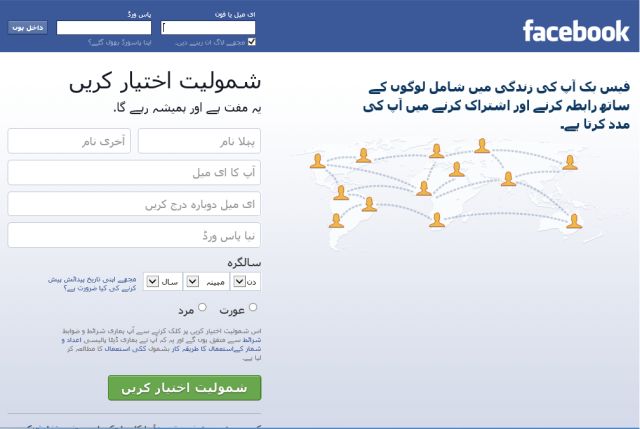
by admin | May 25, 2021 | Markets, Networking, Online Marketing, Social Media, Technology, Urdu
 San Francisco : Artificial Intelligence (AI) researchers at Facebook have set a new record in improving translation from Urdu to English.
San Francisco : Artificial Intelligence (AI) researchers at Facebook have set a new record in improving translation from Urdu to English.
Neural Machine Translation (NMT) is the field concerned with using AI to do translations in any language.
The team from Facebook AI Research (FAIR) has seen a dramatic improvement in its results, the Forbes reported on Saturday.
“To give some idea of the level of advancement, an improvement of 1 BLEU point (a common metric for judging the accuracy of MT) is considered a remarkable achievement in this field; our methods showed an improvement of more than 10 BLEU points,” the team said in a paper that described translation from Urdu to English.
Facebook AI researchers seek to understand and develop systems with human-level intelligence by advancing the longer-term academic problems surrounding AI.
The research covers the full spectrum of topics related to AI, and to deriving knowledge from data: theory, algorithms, applications, software infrastructure and hardware infrastructure.
“Long-term objectives of understanding intelligence and building intelligent machines are bold and ambitious, and we know that making significant progress towards AI can’t be done in isolation,” said researchers from FAIR.
FAIR researchers have tested a new approach that teaches bots how to chit-chat like humans.
Facebook is making deep investments in AI technology and in May announced the next version of its open-source AI framework for developers.
Microsoft is currently leading when it comes to AI and Deep Neural Networks to improve real-time language translation.
Earlier this year, Microsoft brought machine learning to improve language translation for Hindi, Bengali and Tamil.
With Deep Neural Networks-powered language translation, the results are more accurate and the sound more natural.
—IANS

by admin | May 25, 2021 | Hindi, Markets, Media, News, Social Media
 New Delhi : There is a steep divide in the news preferences of Hindi and English readers online and findings of a survey, announced on Wednesday, show that while nationalistic, religious and political themes attract Hindi readers, the news around entertainment and celebrities find more readers in English.
New Delhi : There is a steep divide in the news preferences of Hindi and English readers online and findings of a survey, announced on Wednesday, show that while nationalistic, religious and political themes attract Hindi readers, the news around entertainment and celebrities find more readers in English.
At the same time, the survey also reveals that sharing on nationalistic and religious themes dominated in 2016, with 22 per cent of the total shares for the “Most Shared 5000 stories,” but dropped significantly to 14 per cent in 2017 for the same number of most shared stories.
The survey — carried out by Storynomics, a consulting firm that specializes in business of storytelling in traditional and digital media — comes after a similar survey in 2017 for the news trends in 2016.
The firm analysed sharing of news articles in social media for 143 leading Indian media brands in 10 languages, including Hindi, English and Bengali, among others.
The survey has been carried out on news stories that appeared between January 1, 2017 and December 31, 2017. The calculations for number of shares has also been carried out for the same period.
Even as English continues to be the most popular language for news sharing on Facebook, LinkedIn and Twitter, its contribution to total shares decreased to 44 per cent in 2017 from 48.32 per cent in 2016. However, Hindi maintained its contribution at 34 per cent of the total shares in 2017.
However, the survey also points out that Hindi news stories had a significantly higher average engagement of 1,601 shares per story, whereas English reports were at 483 average shares in 2017.
Bengali continues to be the third most popular language for news sharing in social media, with 6.97 per cent of the total shares. Bengali also had the highest average share per story of 3,307 in 2017 among all languages considered for the study.
Sharing in other Indian languages (excluding English, Hindi and Bengali), according to the survey, doubled and increased their contribution in total shares to 14.76 per cent in 2017.
Further, the findings of the survey suggest that social media engagement for news stories by leading Indian media outlets jumped 33.3 per cent in 2017, with 376.63 crore shares on Facebook, LinkedIn and Twitter, compared to 282.31 crore shares in 2016.
—IANS

 San Francisco : Artificial Intelligence (AI) researchers at Facebook have set a new record in improving translation from Urdu to English.
San Francisco : Artificial Intelligence (AI) researchers at Facebook have set a new record in improving translation from Urdu to English.
